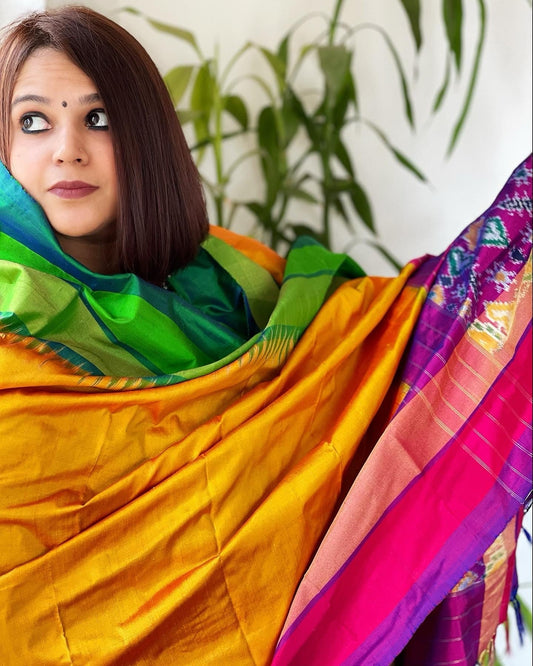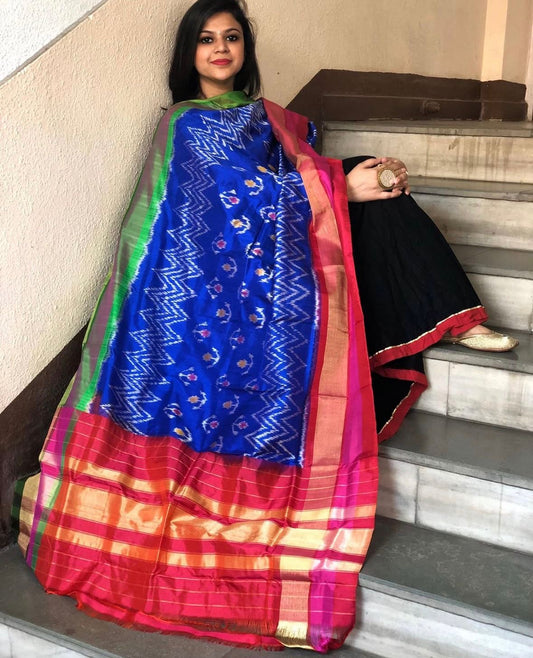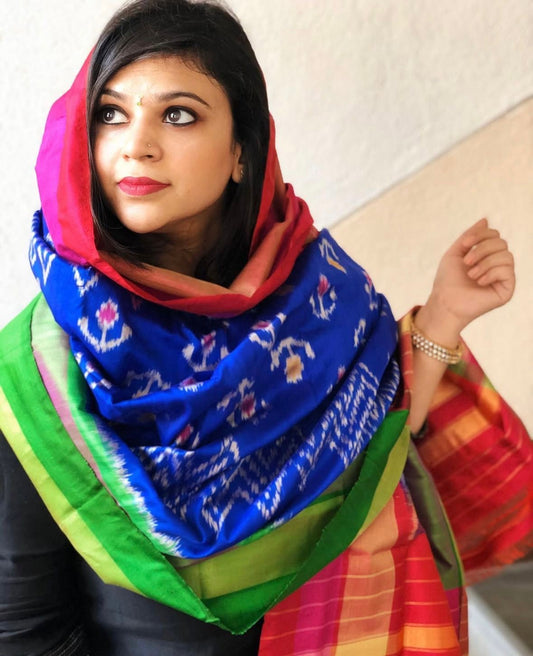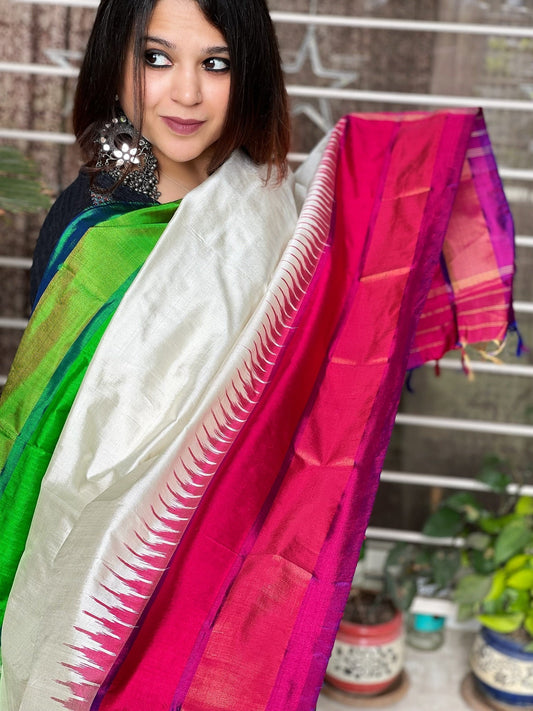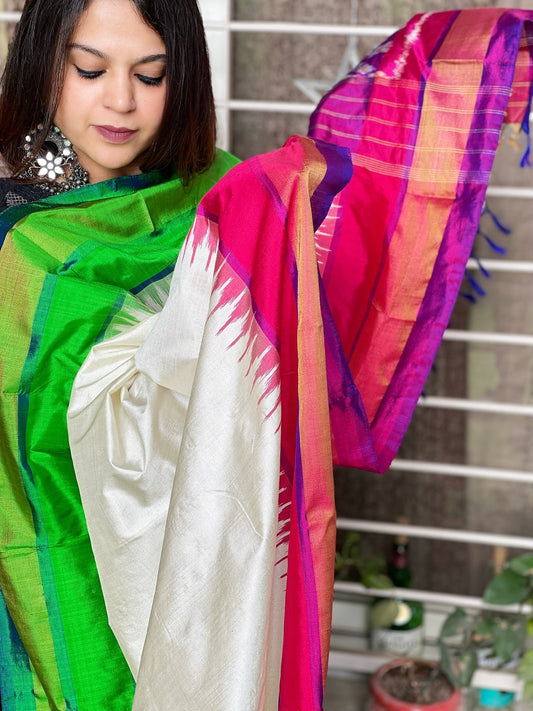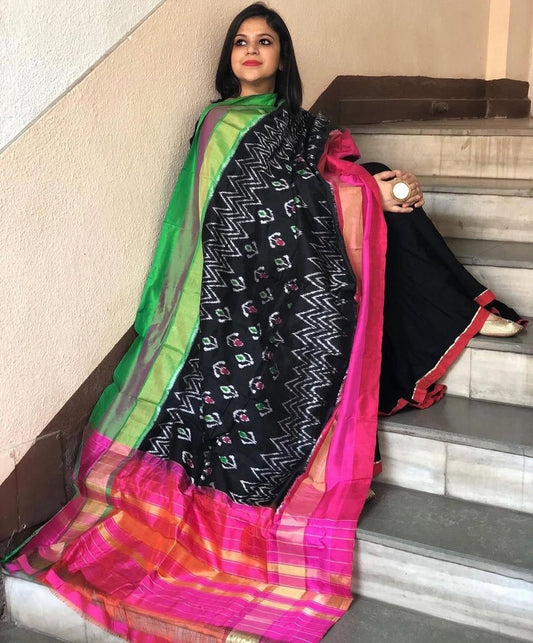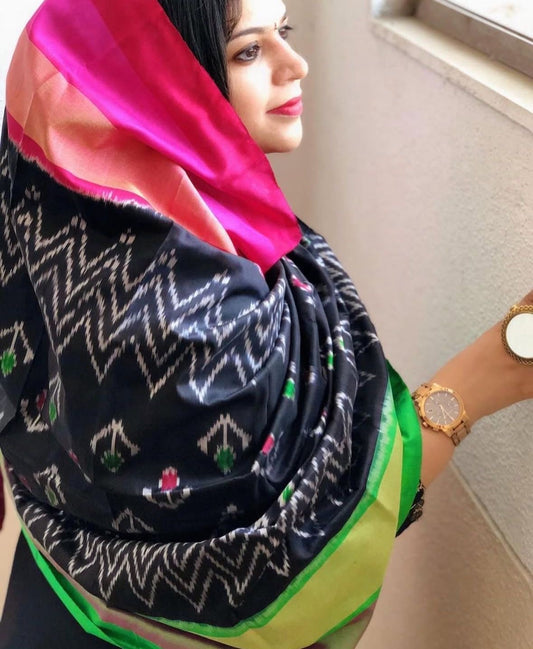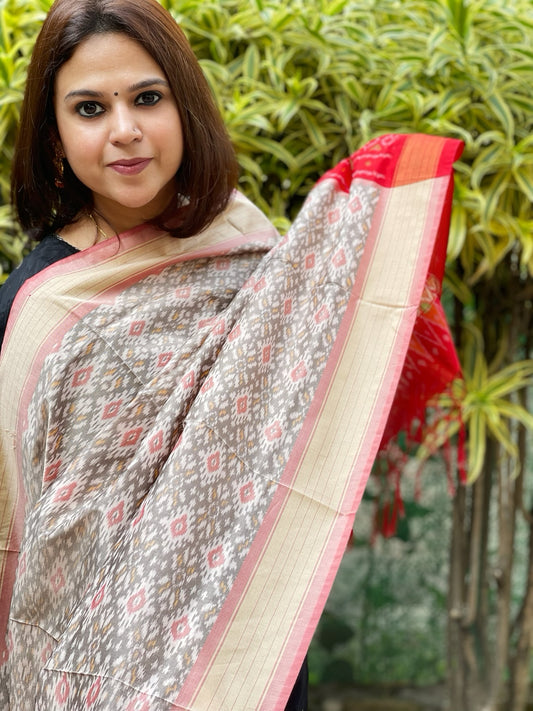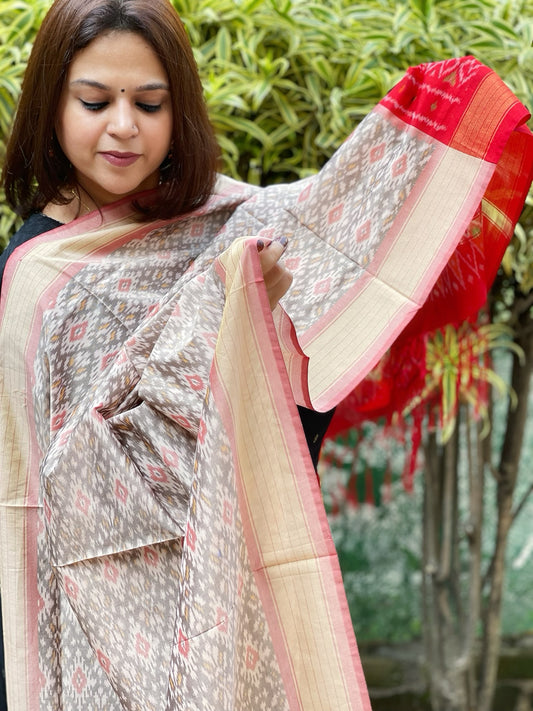Madhubani painting, with its vibrant colours and intricate patterns, is an art form that captivates and enchants. Born in the Mithila region of India, this style of painting carries a legacy that has travelled through generations. These artworks are known for their vivid depictions of nature, mythology and folklore, often painted with natural dyes and pigments. Every stroke in Madhubani painting holds cultural significance, making each piece a unique expression of tradition and creativity.
Translating this art onto fabric has opened a new avenue for artistic expression. Madhubani fabrics not only showcase the beauty of these traditional designs but also bring cultural narratives into everyday wearables. From ornate dupattas to elegant stoles, the art has found a special place in wardrobes, offering a perfect blend of history and style.
Wearing Madhubani painted fabrics is more than a fashion choice; it's an embrace of artistry and heritage. The visual appeal of these fabrics lies in their ability to tell stories through design, making each piece not just an accessory but an experience. The charm of Madhubani lies in its authenticity and the way it connects the wearer to a rich cultural past, showing respect for tradition while fitting seamlessly into modern fashion trends.
Origins of Madhubani Painting: A Cultural Overview
Madhubani painting, also known as Mithila art, has its roots in the Mithila region of Bihar, India. This art form dates back to ancient times and is said to have originated during the Ramayana period, when King Janaka commissioned artists to paint the walls of his palace for the wedding of his daughter Sita to Lord Rama. Since then, this tradition has carried on through generations, particularly among women in the villages of Mithila.
The unique aspect of Madhubani painting is its connection to rituals and festivals. Traditionally, women created these paintings on the walls and courtyards of their homes as a form of decoration and expression during ceremonies and special occasions. Over time, this practice evolved, and artists began transferring their work onto paper and fabric, allowing Madhubani art to reach a wider audience.
This art reflects various aspects of life, including mythology, nature, and daily activities. Common themes involve deities, animals, plants and celestial bodies, all intricately detailed with vibrant colours and patterns. The use of natural materials, like rice paste and vegetable dyes, highlights its eco-friendly nature, making it both sustainable and beautiful. Embracing this art form means acknowledging its rich cultural heritage and appreciating the stories it continues to tell.
The Artistic Elements: Distinctive Features of Madhubani Designs
Madhubani art is easily recognisable because of its distinct style and vibrant features. Each piece is a harmonious blend of bold lines, vivid colours, and detailed motifs, creating a tapestry of visual stories.
1. Line Work and Patterns: Madhubani paintings are known for their intricate line work and repetitive patterns. Artists often use a fine brush or a pen-like tool made from bamboo sticks to create these detailed designs. The combination of straight lines and geometric patterns forms the backbone of each painting.
2. Bold Colour Palette: Bright colours such as red, yellow, blue, green, and black dominate Madhubani artwork. These colours are typically derived from natural sources, creating deep, lasting hues that contribute to the art's authenticity.
3. Symbolic Motifs: Each Madhubani piece includes motifs that carry cultural significance. Peacocks represent love, fish symbolise fertility, and lotus flowers denote divine beauty. These symbols are thoughtfully placed within the artwork, weaving stories rooted in tradition.
4. Two-Dimensional Perspective: Unlike other art forms, Madhubani maintains a flat, two-dimensional appearance. This simplification brings out the vibrancy of the colours and patterns, making each element stand out without the need for shading or perspective.
The distinctive elements of Madhubani designs allow the art to resonate with both tradition and personal expression, providing a visual feast that captures and celebrates the essence of Indian culture.
Craftsmanship on Fabric: The Process of Creating Madhubani Painted Textiles
Transforming Madhubani art from walls and paper to fabric is an intricate process that requires patience and skilled hands. The journey begins with choosing the right fabric, typically cotton or silk, which acts as a pristine canvas for the vibrant artwork.
1. Sketching the Design: The first step involves outlining the design with a fine brush or pen. Artisans sketch the patterns directly onto the fabric, ensuring the symmetry and flow that Madhubani is known for. This step lays the groundwork for the intricate details to follow.
2. Applying Natural Dyes: Once the design is sketched, artists fill the motifs with natural dyes. These dyes, often made from plants, fruits, and minerals, are applied carefully to bring the artwork to life. Whether it's the deep blues from indigo leaves or the earthy reds from madder roots, each colour adds depth and character.
3. Detailing with Precision: In this step, artisans focus on the finer details. They add minute patterns within broader designs, paying attention to every line and curve. The hand-painted technique ensures that no two pieces are identical, providing each fabric with a distinct charm.
4. Setting the Colours: The finished artwork is then treated to ensure the colours are set and do not fade easily. This often involves a careful heating process or washing with special solutions that help the colours adhere permanently to the fabric.
Creating Madhubani painted fabrics is a labour of love, reflecting an artist's dedication to preserving cultural narratives through wearable art.
Integrating Madhubani Fabrics: Styling Tips for Modern Wear
Madhubani fabrics offer a versatile canvas for creative fashion expression. Integrating these pieces into everyday wear allows you to showcase culture and style effortlessly. Here are some practical ways to style Madhubani pieces:
- Madhubani Dupattas: Pair a bright Madhubani dupatta with a solid-coloured kurta and jeans or leggings. The contrast emphasises the dupatta’s artwork while keeping the look casual and chic.
- Statement Stoles: Drape a Madhubani stole over a plain saree or dress to transform it instantly. The intricate designs add elegance and a touch of tradition.
- Bohemian Chic: Use Madhubani scarves as headbands or belts. These versatile accessories infuse a hint of bohemian flair to casual outfits, making them uniquely yours.
- Office Ready: Incorporate a Madhubani printed blouse under a tailored blazer. This subtle touch of tradition in professional wear speaks volumes about your appreciation for art and culture.
- Home Decor Accents: Beyond wearables, Madhubani fabrics can also brighten up home interiors. Use them as wall hangings or cushion covers to create an artistic ambience.
By embracing Madhubani in your wardrobe, you celebrate its cultural heritage while enjoying its vibrant aesthetics.
Conclusion
Madhubani painted fabrics are more than just colourful accessories or garments; they are a bridge that connects the past with the present, bringing history into daily life. The intricate designs hold stories of ancient traditions and the craftsmanship that went into every brushstroke speaks volumes about an art form that has endured through time. Each piece you choose can carry with it the legacy of those who have created it, allowing you to not just wear something beautiful but to engage with the cultural narratives it represents.
Whether you are an art enthusiast, a fashion-forward individual or someone who simply appreciates handmade crafts, Madhubani fabrics offer something that resonates on a personal level. They add a burst of colour and tradition to your life and offer countless ways to express individuality through style.
Discover the charm of Madhubani textiles and bring a piece of this timeless art into your life. Head over to Masakalee to explore a curated selection of exquisite handmade dupattas, stoles and shawls that embody the essence of Madhubani art. Each piece tells a story, and with our collection, you can become part of that narrative. Indulge in the beauty and heritage of Indian crafts and find the perfect addition to your wardrobe today.




